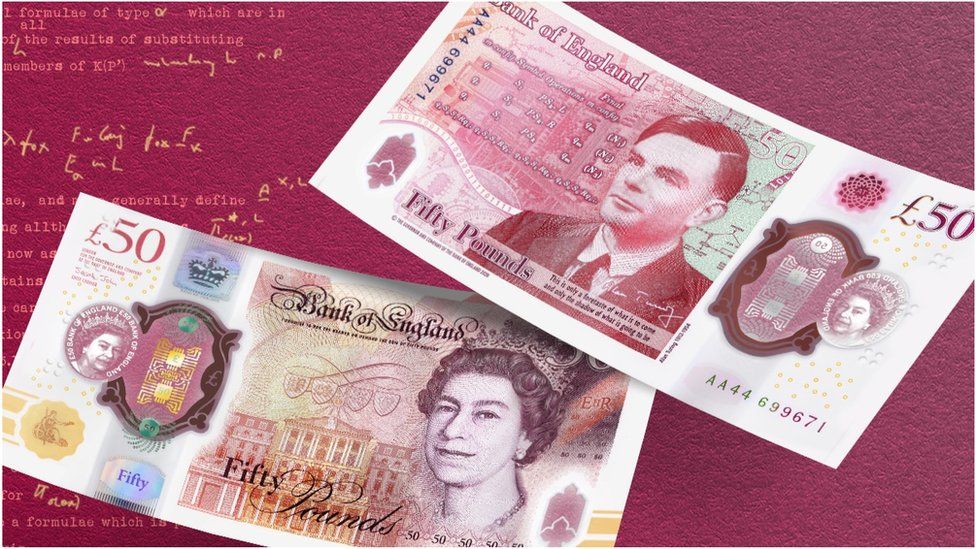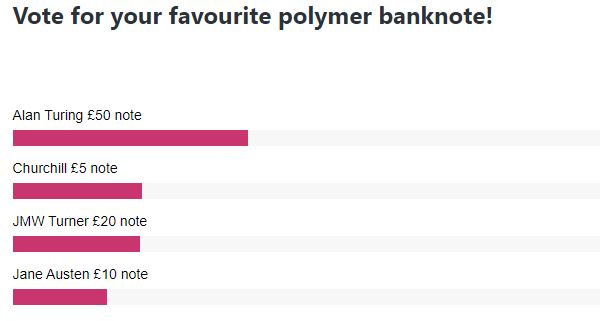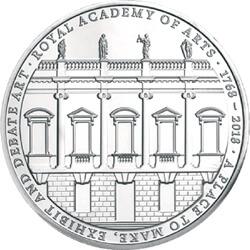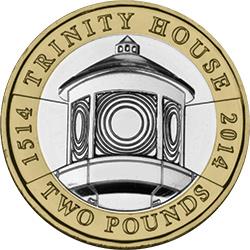Uncategorised
The Commonwealth Games Celebrated on UK Coins!
Next year Birmingham is set to host the international multi-sport event, the 2022 Commonwealth Games.
The first-ever edition of the Commonwealth Games took place in Canada in 1930. The games consists of 400 athletes from 11 countries who take part in six sports and 59 events.
Since then, the Games have been conducted every four years (except for 1942 and 1946 due to World War II). Team England has competed at every Games – one of only six nations to do so and Team Scotland has hosted the games THREE times!
The Commonwealth Games have been incredibly influential in the sporting world but they’ve also provided the UK with some incredible coin issues!

In our blog, we take a look back at some of the UK coins celebrating the Commonwealth Games…
1986 UK Commonwealth Games £2
The 1986 Commonwealth Games £2 coin changed the face of UK commemorative coins, being the first of its denomination to be struck and the first British coin being issued to commemorate a sporting event.
The thirteenth Commonwealth Games were held in Edinburgh in 1986, and are well remembered for being boycotted by 32 of the 59 eligible countries who did not agree with Britain’s sporting connections to South Africa during the Apartheid era.
These original £2 coins were never commonly found in circulation, as they were mainly struck for collectors. This made them much rarer than their successor, the bi-metallic £2 coin, as their mintage figures were much lower.
The pre-1997 £2 coins are still legal tender but they’re not used in circulation and banks/shops can refuse to accept them. Despite this, they still remain incredibly popular amongst collectors!
The reverse design of this coin features a thistle encircled by a laurel wreath over the cross of St Andrew and it has a mintage of 8,212,184.
This coin is no longer in circulation but Change Checker has strictly limited stock remaining for collectors. To secure yours with FREE p&p today, simply click here >>
2002 Commonwealth Games £2 Series
These four coins were issued in 2002 – again issued to celebrate the Commonwealth Games – this time held in Manchester.
At first glance, you might struggle to spot the difference between them as they all feature the same running athlete trailing a banner behind.
However, each has a different cameo, representing each of the four constituent parts of the United Kingdom.
They are some of the scarcest £2 coins now in circulation, with the Northern Ireland design having a mintage of JUST 485,500!
The other coin designs have the following mintage figures:
- 2002 Commonwealth Games Wales £2: 588,500
- 2002 Commonwealth Games England £2: 650,500
- 2002 Commonwealth Games Scotland £2: 771,750
Find out more about these coins here >>
2014 Commonwealth Games 50p
To celebrate Glasgow holding the 2014 Commonwealth Games, the Royal Mint issued an official XX Commonwealth Games 50p coin the very same year
Designed by Alex Loudon, the reverse features a cyclist and athlete depicting the power of sport.
The home of the Games are reflected in the choice of Scottish Saltire and lettering inspired by Glasgow-born architect, artist and designer, Charles Rennie Mackintosh.
This coin is the least rare of the Commonwealth Games coins, with a total of 6,500,000 entering circulation.
Vote for your favourite Commonwealth Games coin!
With a total of 6 coins commemorating the Commonwealth Games, we want you to have your say and vote for your favourite!
Secure the 1986 UK Commonwealth Games £2 for your collection!
This coin can no longer be found in circulation, so this could be one of your last chances of securing this coin for your collection!
Alan Turing – The Face of the £50 Note!
In 2019, The Bank of England revealed Alan Turing as the new face of the £50 banknote.
In their search to find an eminent British scientist to feature on the £50 note, a total of 227,299 nominations were sent to The Bank of England. 989 eligible characters were narrowed down to a shortlist of just 12 before Turing was finally selected.
Change Checker is so excited to reveal that today the design of this BRAND NEW £50 note has been officially confirmed by The Bank of England.

In keeping with Turing’s code-breaking legacy, this brand new £50 has been declared as the most secure yet.
What features on the new £50 note?

This brand new banknote is FULL of exciting features. Including:
- A photo of Turing from 1951 which is part of the National Portrait Gallery’s collection
- A table and mathematical formulae from Turing’s 1936 paper “On Computable Numbers, with an application to the Entscheidungsproblem”
- A design of Turing’s trial model of his famous Automatic Computing Engine (ACE) Pilot Machine
- Technical drawings for the British Bombe, one of the primary tools used to break Enigma-enciphered messages
- A quote from Turing, from an interview in The Times newspaper (June 1949): “This is only a foretaste of what is to come, and only the shadow of what is going to be”
- His signature from the visitor’s book at Max Newman’s House in 1947 which is on display at Bletchley Park
- Ticker tape depicting Alan Turing’s birth date (23 June 1912) in binary code.
In addition to these amazing design features, there are of course a series of security features, similar to those we’ve seen on our £5, £10, and £20 polymer notes, including holograms and see-through windows.
GCHQ Collaboration
In recognition of Turing’s code-breaking expertise, the Bank of England have collaborated with GCHQ on the intelligence and cyber agency’s toughest puzzle ever – based on the Turing £50 bank note design.
GCHQ’s Turing Challenge is a set of 12 puzzles that have been put together by intelligence staff at GCHQ, where problem solving and a diverse mix of minds are at the heart of its work to help protect the UK from increasingly complex threats
Who was Alan Turing and why is he being featured on a £50 note?

Alan Turing was most famously known for accelerating Allied efforts to read German Naval messages enciphered with the Enigma machine.
His work is said to have been key to shortening World War Two and saving millions of lives.
In addition to his work during World War Two, Turing played a pivotal role in the development of early computers, first at the National Physical Laboratory and later at the University of Manchester.
In 2013, he was given a posthumous royal pardon for his 1952 conviction for gross indecency.
Speaking of the new note, Andrew Bailey, the governor of the Bank of England, said: “Turing was a leading mathematician, developmental biologist, and a pioneer in the field of computer science. By placing him on our new polymer £50 banknote, we are celebrating his achievements, and the values he symbolises.”
Polymer Notes

This brand new £50 note is the last in the Bank of England’s collection to switch from paper to polymer, following the popularity of the polymer £20, £10 and £5 notes.
The banknote will enter circulation on 23 June, which would have been the mathematician’s birthday.
Alan Turing £50 note voted as Change Checker’s favourite polymer note!
As the brand new £50 note is the last in the Bank of England’s collection to switch from paper to polymer, we asked you to vote for your favourite polymer note.
The results are in!

The Alan Turing £50 has been revealed as Change Checkers’ favourite polymer banknote, taking over 40% of the votes!
We’re certain collectors will be eager to add this banknote to their collections when it’s released later in the year. Will you? Let us know in the comments below!
Don’t miss out on the very latest UK coin releases!

Join the Change Checker UK CERTIFIED BU Subscription Service and receive new UK coins sent to your door without the hassle of placing orders on the day of release!
Simply choose the perfect subscription for you here >>
150 years of The Royal Albert Hall celebrated on brand new £5 coin!
2021 marks an incredible 150 years since Prince Albert’s vision to create a Hall for the nation was brought to fruition.
The Royal Albert Hall has since become one of the UK’s most treasured and distinctive buildings and is one of the most famous music and concert venues in the world.
In this very special anniversary year, The Royal Mint has issued a BRAND NEW UK £5 coin in celebration.
Designed by Anne Desmet, this brand new coin features an instantly recognisable design in an ode to the distinctive building.
First opened by Queen Victoria in 1871, the Hall has played host to some of the world’s leading artists and performances.
And, excitingly for collectors, The Royal Albert Hall now features on a UK coin for the first time!
You can own this brand new £5 coin in CERTIFIED Brilliant Uncirculated quality for JUST £10.99 (+p&p). To order yours, simply click here >>
Excitingly, this brand new coin isn’t the first UK coin to commemorate British landmarks…
2018 Royal Academy of Arts £5

In 2018, to celebrate the 250th Anniversary of the founding of The Royal Academy of Arts, The Royal Academy (RA) and The Royal Mint collaborated to issue a £5 coin.
The reverse of this £5 was designed by celebrated architect Sir David Chipperfield RA, and features the historical facade of Burlington House, home to the Royal Academy since 1867.
There is a strong historical link between The Royal Mint and The Royal Academy of Arts, as Richard Yeo, who was one of the founding members of the Royal Academy, was also the chief engraver at The Royal Mint.
This version, struck to base metal specifications, was initially made exclusively available to Change Checkers!
2014 Trinity House £2

Since being granted a Royal Charter by King Henry VIII in 1514, Trinity House has provided maritime safety on the UK’s waterways and coastal areas by providing nearly 600 Aids to Navigation ranging from lighthouses, buoys and beacons to satellite navigation technology.
The reverse of the 2014 £2 coin commemorates the 500th anniversary of the organisation and depicts a lighthouse lens – an enduring symbol of the seas and the safety which Trinity House continues to provide.
3,705,000 of these coins entered circulation – let us know if you’ve found one in your change!
2018/2019 Houses of Parliament 10p

The Royal Mint sparked great excitement with the surprising announcement of the release of 26 BRAND NEW 10p coins into circulation in 2018. Their theme is the A-Z of Great Britain and these were the first ever commemorative UK 10p coins.
This 10p features the letter ‘H’, which sits above the official logo for the Houses of Parliament. The House of Parliament is the meeting place for the House of Commons and the House of Lords, the two houses of the Parliament of Great Britain.
220,000 of these coins were issued into circulation in 2018 and 84,000 were issued in 2019, so consider yourself lucky if you’ve found one in your change!
Paddington’s Adventures of London 50p Coins

In 2018, for the first time ever, Paddington Bear made an appearance on a series of UK 50p coins!
These coins were issued to mark the 60th anniversary of Paddington’s first appearance in Michael Bond’s classic childhood tale and they quickly became a collector favourite!
Two designs were issued for circulation in 2018 and they saw Paddington visit Paddington Station and Buckingham Palace. Excitingly, Paddington’s tour of London continued in 2019, as he visited a further two landmarks – the Tower of London and St. Paul’s Cathedral!
Do you have a favourite Paddington 50p? Let us know in the comments below!
Tower of London £5 Coins

Built during the Norman Conquest in 1066, Her Majesty’s Royal Palace and fortress of the Tower of London has been used as a prison, jewel house, mint and even a menagerie.
In tribute to the Tower, The Royal Mint issued a four coin series throughout 2019 celebrating the history of the Tower of London, one of Britain’s most iconic attractions. The series included coins depicting the following:
- The Legend of the Ravens
- The Yeoman Warders
- The Ceremony of the Keys
- The Crown Jewels
The collection continued into 2020 with four new £5 coins featuring original designs, each exploring a different element of the Tower of London’s history. This series included designs of the following:
- The Infamous Prison
- The Royal Mint
- The Royal Menagerie
- The White Tower
You can find out more about these coins here.
2009 Kew Gardens 50p

The Kew Gardens 50p hit the headlines in February 2014 when it was revealed as the rarest 50p in circulation, with just 210,000 issued. It’s since been unbeaten at the top of our Scarcity Indexes as the UK’s most sought-after 50p.
The Royal Botanic Gardens in Kew are a UNESCO World Heritage Site which boast 4.5 acres of gardens under glass as well as a soaring treetop walkway. One of the garden buildings is a Chinese Pagoda built in 1761 which features on the design of this scarce commemorative 50p.
This coin was re-issued in 2019 as part of the 50th Anniversary of the 50p Celebrations. The 2019 version of this coin was a commemorative-only issue and did not enter general circulation.
Are you lucky enough to have one in your collection? Comment below!
2005 60th Anniversary of the end of WWII £2

On 8th May 1945, Winston Churchill announced VE Day – Victory in Europe, which marked the end of World War Two and followed Germany’s surrender about a week after Adolf Hitler had committed suicide.
The reverse design of this £2 features a depiction of St. Paul’s Cathedral which survived the Blitz to become a great symbol of hope to a war-torn nation.
The edge inscription reads – IN VICTORY: MAGNANIMITY, IN PEACE: GOODWILL – part of the famous maxim that prefaces Churchill’s history of the Second World War.
We’re thrilled to see The Royal Albert hall join an incredible series of UK coins celebrating famous British landmarks.
Will you be securing one for your collection? Let us know in the comments below!
Secure the brand new 2021 UK Royal Albert Hall £5 for your collection!
Secure the brand new 2021 UK Royal Albert Hall £5 for your collection for JUST £10.99 (+p&p) today >>
Your coin will come in superior Brilliant Uncirculated quality presented in official Change Checker packaging.






